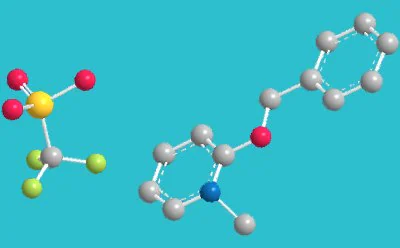Protection/Deprotection Reagents
Chemical Synthesis
Protection/Deprotection Reagents

One of the common difficulties with natural product and other multi-step syntheses is the need to render one functional group inert to a particular reagent, while keeping another group open for further chemical elaboration. Despite the great advances made in the involved synthesis of multifunctional products, chemoselectivity in functional group transformations remains a critical issue in organic synthesis. Unfortunately, there is no perfect protecting group applicable to any functional group in any situation. Thus, the chemist needs a handy toolbox of selective and efficient protection reagents that can be applied and easily removed under a variety of conditions by a deprotection reagent.
We are pleased to offer an unmatched portfolio of alcohol protecting groups, amine protecting groups, carbonyl protecting groups, carboxylic acid protecting groups, phosphate protecting groups, and terminal alkyne protecting groups to make your breakthroughs feel closer than ever. Selected highlights are:
- The Dudley Reagent is capable of benzylation of alcohols under neutral conditions. Allyl and 4-methoxybenzyl trichloroacetimidates are also commonly used to protect alcohols in various synthetic applications.
- Ethynylnaphthalenes offer sterically unobtrusive protection of hydroxyl groups on carbohydrates with orthogonal reactivity compared to benzyl ethers.
- The (2-trimethylsilyl)ethanesulfonyl (SES) group is used to protect amines via SES chloride; alternatively, SES-NH2 can be used to introduce a SES-protected amine functionality directly into a molecule.
- The Heller-Sarpong reagents promote highly chemoselective esterification and amidations as a practical alternative to diazoalkanes and Weinreb amide protocols.
- Our fluorous protecting groups serve several purposes, acting as protecting groups and serving as temporary fluorous tags that can facilitate product design and purification throughout a synthesis.
It is equally important to be able to remove the protecting group at the end of the synthesis. Our portfolio of deprotecting agents will help you get to your desired molecule to reach new scientific frontiers.
Chemical Synthesis
- Boronic Acids & Derivatives
- C-C Bond Forming Reagents
- Chiral Auxiliaries
- Coupling Reagents & Nucleosides
- Grignard Reagents
- Halogenation Reagents
- Organoaluminum Reagents
- Organolithium Reagents
- Organosilicon Reagents
- Organotin Reagents
- Organozinc Reagents
- Oxidation Reagents
- Protection/Deprotection Reagents
- Reducing Agents


